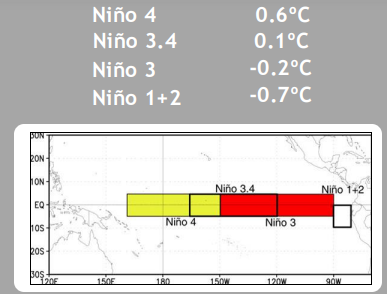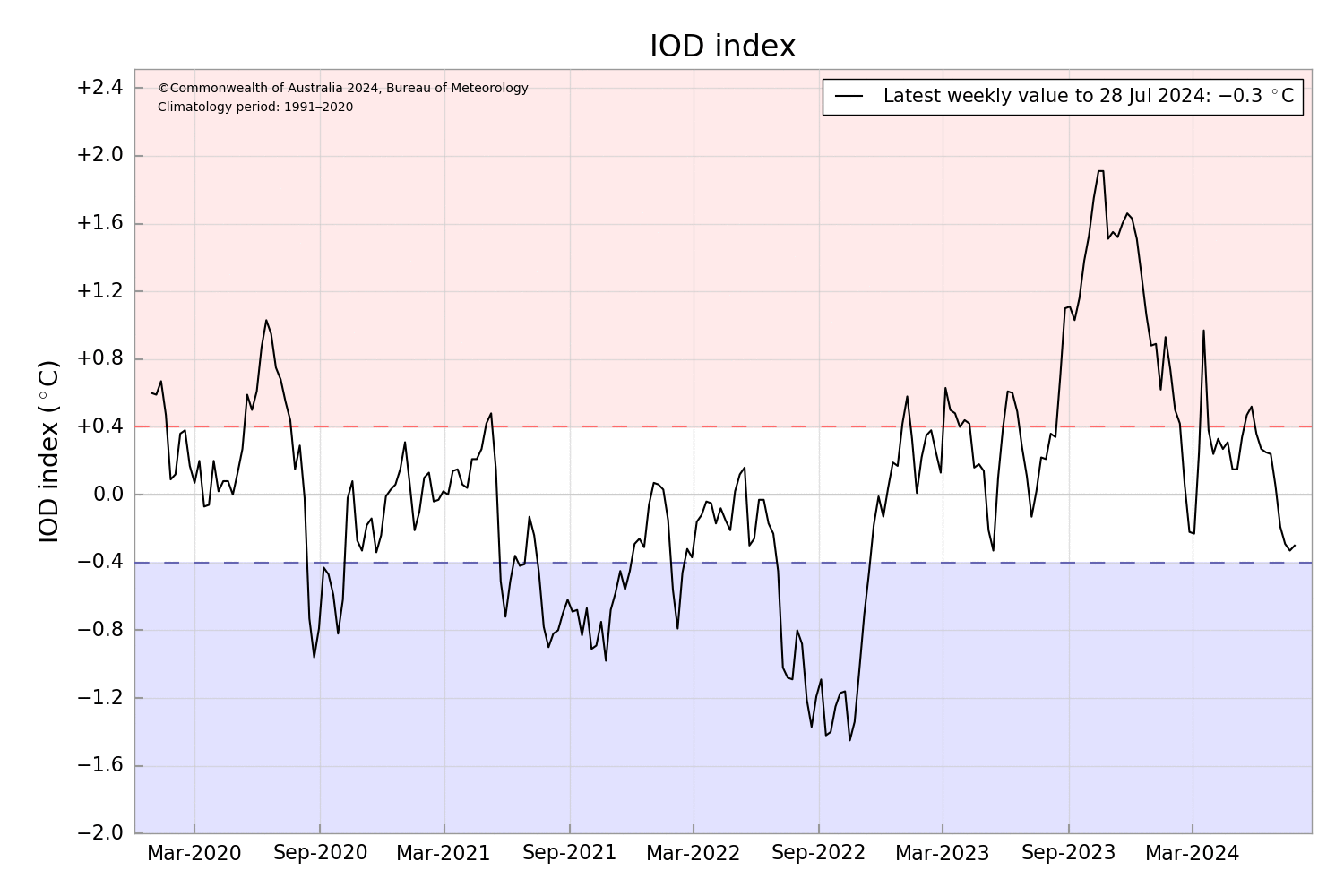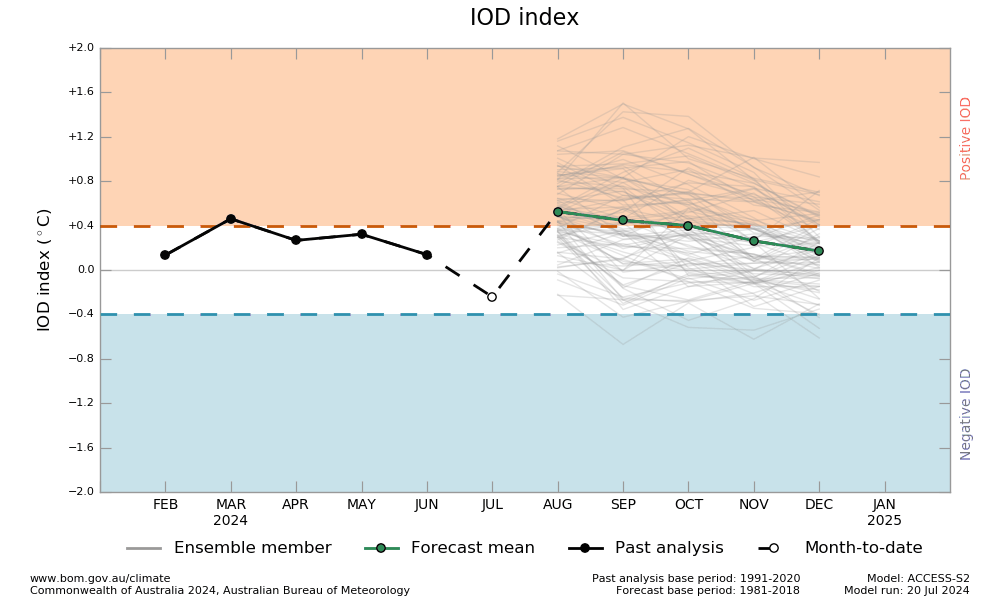
ENSO neutral conditions persist in the Nino region of the equatorial Pacific Ocean. Both, oceanic and atmospheric indicators are aligned to corroborate the ENSO-neutral state. La Nina conditions, earlier anticipated to arrive in June-July have hit the deck and the revised estimates now take it beyond the official dates of Indian monsoon from June-September. The CPC ENSO forecast predicts a 70% chance of La Nina during August-October and persist into Northern Hemispheric winters 2024-25. As the seasonal forecast models have low skills at this time of the year, ENSO forecasts should be interpreted with caution.

ENSO: The SST anomaly for the Nino 3.4 region during the April-June season was +0.45°C and for the month of June 2024, it was +0.24°C. For the month of July, the average Nino 3.4 works out to be +0.26°C. The most recent weekly anomaly as of 29th July was +0.1°C. This shows that on average, the ONI region was slightly cooler in June and warmer in July, which is in defiance of the normal pattern. And, this is what has delayed the arrival of La Nina.

The transition from El Nino to La Nina marks a period of neutrality lasting 3-5 months. Also, the threshold values of La Nina differ between the Bureau of Meteorology (BOM) and CPC, a unit of the NOAA. While BOM considers the threshold at +/- 0.8°C, the Climate Prediction Center has fixed the cross-over point at +/- 0.5°C. Obviously, the arrival and establishment of La Nina will vary between the two agencies. Notwithstanding, even when La Nina arrives at the fag end of August or September, it is likely to be weak with a temperature anomaly of < 1°C.

IOD: The Indian Ocean Dipole is currently neutral. The IOD index for the week ending 28th July 2024 was -0.3°C. The index value has been hovering around -0.3°C for the last three weeks. There is no consensus amongst various models on the forecast of IOD during the next 2 months. Three out of five climate models suggest the possibility of SSTs reaching negative IOD levels (below -0.4°C). However, the BOM model forecasts a neutral IOD, within the positive threshold. Whatever the outcome, IOD is likely to remain within the threshold of +/- 0.4°C for the next 2 months.

MJO: The Madden-Julian Oscillation is currently indiscernible. Some model forecasts suggest a weak pulse of the MJO may travel to the Western Hemisphere or Maritime Continent in Phase-8, in early August. But, the majority still support a weak pulse for the next two weeks. The MJO pulse seems to be struggling to fully propagate eastward from the Maritime Continent and into the Western Pacific. The pulse remains inconsequential for any weather activity in the Indian Seas.

The much-awaited La Nina, earlier expected during the start of monsoon has been delayed and is unlikely to establish before September. Even when it arrives, it has to start with a weak phase. The IOD, as such has defied the earlier forecast of turning positive during the monsoon. The index is persistently negative, albeit within the neutral threshold. It may be construed that both the oceanic parameters, La Nina and IOD, may not offer any outright support to the monsoon. However, monsoon, the largest global weather system has enough intrinsic energy to propel a satisfactory normal season, against all odds.


